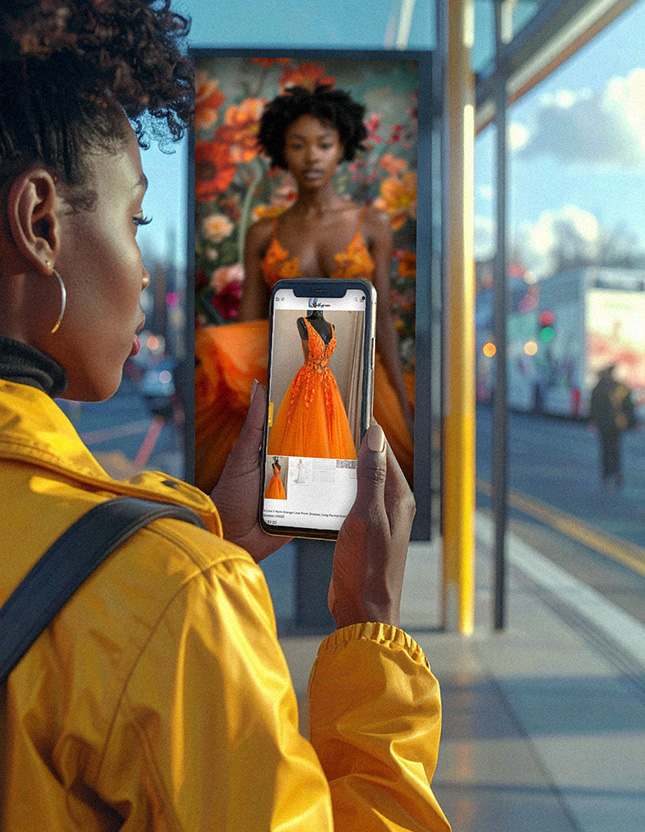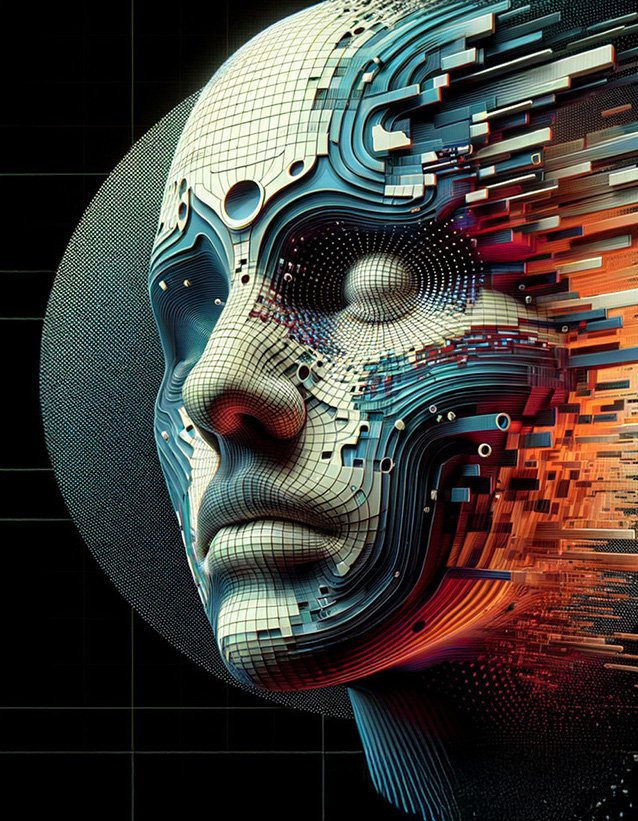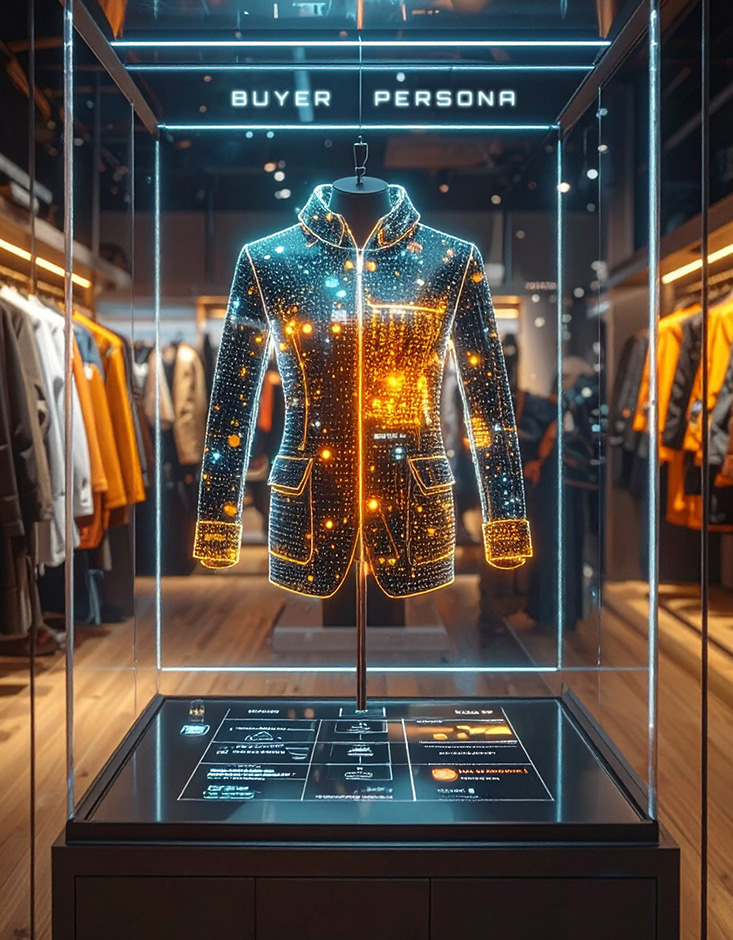Digital marketing has evolved at an astonishing pace, and for the experienced marketer, the challenge is no longer just getting an ad in front of a customer—it’s about getting the right ad in front of them at the perfect moment. AI ad campaigns are no longer a futuristic concept; they are the definitive competitive advantage for businesses aiming to maximize their ROI. If you’ve felt the pain of dwindling returns or the frustration of inefficient ad spend, you know it’s time to adapt. We’re in an era where AI is rapidly reshaping our industry, and as former IBM CEO Ginni Rometty once said, “AI will not replace humans, but those who use AI will replace those who don’t.” This guide is for you. We’ll show you how to leverage artificial intelligence to overhaul your ad campaigns, predict customer behavior, and scale your success in ways you never thought possible.
A scene from Minority Report starring Tom Cruise predicts the Future of Personalized AI Advertising.
Understanding the AI-Powered Ad Landscape
Gone are the days of manual bid adjustments and gut-feeling targeting. Today’s AI-driven platforms are a paradigm shift, enabling a level of precision that was once science fiction. The key to unlocking this power is to understand the core components of an AI customer journey and how they feed into a robust ad strategy.
AI operates by ingesting massive amounts of data from across your marketing channels—from social media to your website to your email campaigns. It uses this data to identify patterns and predict behavior. For instance, an AI can analyze a user’s purchase history and browsing habits to determine their likelihood of converting. This insight is invaluable for journey optimization, ensuring you deliver a seamless customer experience from the very first touchpoint to the final conversion. The goal is to make every interaction feel personal and relevant.
In 2025, AI is on its way to ubiquity: Two-thirds of marketers globally (66%) use AI in their role, and that number increases to 74% among American marketers. The primary driver of AI adoption is AI embedded in existing tools, like Google Gemini and Zoom AI Companion. And 89% of AI users said these built-in features increased their overall AI usage. Hubspot Resource Report
Hyper-Targeting: Connecting with Your Ideal Customer
At the heart of a successful AI ad campaign is hyper-targeting. This is where AI moves beyond simple demographics and delves into the nuanced behaviors and preferences of your audience.
The Power of AI Personalization
True AI personalization allows you to show ads that are not only relevant to a user’s interests but also to their current emotional state and intent. For example, if a user has abandoned their shopping cart on your e-commerce site, AI can trigger a personalized retargeting ad with a specific discount code, perfectly timed to recapture their attention.
This is a deep form of AI for ad targeting that goes beyond simple segmentation. The AI creates dynamic audience segments in real-time based on live data signals. It’s a continuous, self-improving process where the system learns more with every click and conversion, refining its understanding of what makes a customer tick.
Leveraging Predictive Analytics for Audience Segmentation
Predictive analytics is the engine of an effective AI customer journey. AI can analyze past customer data to predict future behaviors. This is how you proactively identify high-value customers before they even make a purchase.
Lookalike Audience Creation: AI can analyze the attributes of your best customers and find new audiences with similar characteristics, expanding your reach with remarkable efficiency.
Churn Prediction: By identifying customers who are likely to disengage, you can launch targeted re-engagement campaigns to save those relationships.
Lifetime Value (LTV) Forecasting: AI can forecast which new customers have the highest potential LTV, allowing you to prioritize ad spend on acquiring the most valuable clients.
Maximizing Your ROI with AI-Driven Bidding Strategies
Your bidding strategy is the direct lever for maximizing profit, and AI has revolutionized this process. Instead of manually adjusting bids throughout the day, AI-driven bidding strategies use algorithms to make lightning-fast decisions based on dozens of real-time signals.
Smart Bidding vs. Manual Bidding
Manual bidding, even for the most seasoned professional, is simply no match for the speed and precision of AI. A human can monitor a handful of signals, but an AI algorithm can process thousands in milliseconds—from time of day to device type to user location and beyond. Learn more about the latest AI features for smart bidding on the Google Business Blog.
Real-Time Bidding: AI can analyze ad placements in real-time auctions, bidding the optimal amount to secure the impression for the highest-value audience.
Value-Based Bidding: The AI doesn’t just bid to get a click; it bids to get a conversion. It can even prioritize bids based on the predicted value of that conversion, ensuring you get the most profitable customers.
This advanced approach to journey optimization and bidding is what allows you to spend smarter, not just more. It’s no surprise that 70.6% of marketers believe AI can outperform humans in these key marketing tasks.
The Future Is a Partnership: Human & Artificial Intelligence
While AI is a powerful tool, it’s not a set-it-and-forget-it solution. The real magic happens when human expertise guides the machine. Your role as a marketer is to set the strategy, define the goals, and provide the high-quality assets.
How to Steer Your AI-Run Campaigns
You can’t just hand the keys over to the machine without a clear roadmap. To effectively steer your AI campaigns, you must:
Define Clear Goals: Is your objective to acquire new customers, increase brand awareness, or maximize a specific product’s sales? Setting a clear goal for the AI is the single most important step.
Provide High-Quality Data Signals: The better your first-party data, the smarter your AI will be. Invest in your data and ensure it’s clean and well-structured.
Create Compelling Assets: AI can determine what works best, but it needs a variety of strong text, images, and videos to choose from and to assemble into dynamic ads.
Your strategic input and unique insights into your brand’s voice and vision are what turn a generic AI campaign into a market-dominating force.
Conclusion
The evolution of advertising is a constant flow, and adapting to the latest technologies is critical for survival and success. AI has moved beyond simple automation and is now an essential partner in creating smarter, more efficient, and more profitable ad campaigns. By embracing an AI-driven approach, you are not just optimizing your ads; you are reshaping the entire customer experience, revolutionizing your e-commerce strategy, and ensuring your business thrives in the age of artificial intelligence.
The future of marketing belongs to the agile. We’ve shown you how the AI customer journey can be leveraged for hyper-targeting and maximizing your ROI. Now, it’s your turn to take action.
FAQ: Your Top Questions About AI Ad Campaigns
AI can be used to optimize your campaigns by automating tasks like bidding, ad creative testing, and audience targeting. By analyzing vast datasets, it can identify the most effective combinations of ads, channels, and audiences to maximize your return on investment.
Quality over quantity is key. Even with limited data, focus on providing high-quality, consented first-party data. You can also use AI’s modeling and predictive capabilities to fill in data gaps and make smarter decisions.
Reputable AI personalization platforms and tools adhere to strict data privacy regulations like GDPR and CCPA. They often rely on anonymized or aggregated data rather than personal, identifiable information. Transparency and giving customers control over their data are key to building trust.
As mentioned earlier, AI will not replace humans, but those who use AI will replace those who don’t. AI automates repetitive tasks, freeing up your time to focus on high-level strategy, creative direction, and the human relationships that the machine cannot replicate.
Digital marketing has evolved at an astonishing pace, and for the experienced marketer, the challenge is no longer just getting an ad in front of a customer—it’s about getting the right ad in front of them at the perfect moment.




